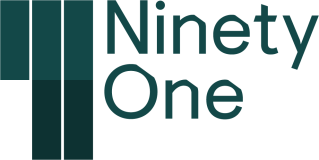The IMF expects the Asia Pacific economy to shrink by 2.2% in 2020; nevertheless, the region is set to post a healthy recovery in 2021 with growth of 6.9%. At individual country level, economic output is expected to be very mixed as governments address the impact of the Covid-19 pandemic.
To view the series of market updates through October, click here
- The Bank of Japan cut its forecasts for domestic growth
- Japan’s export decline slowed down
- A cut in Australian interest rates was widely expected
The International Monetary Fund (IMF) expects the Asia Pacific economy to shrink by 2.2% in 2020; nevertheless, the region is set to post a healthy recovery in 2021 with growth of 6.9%. At individual country level, economic output is expected to be very mixed as governments address the impact of the Covid-19 pandemic. Japan is forecast to contract by -5.3% this year, whereas South Korea is expected to shrink by 1.9%, Malaysia by 6%, and the Philippines by 8.3%. In comparison, China is predicted to post positive growth of 1.9%.
“Sentiment amongst Japanese manufacturers improved slightly”
Sentiment amongst Japanese manufacturers improved slightly during the third quarter of 2020 according to the Bank of Japan’s (BoJ’s) quarterly Tankan survey. Although manufacturers remained pessimistic about the outlook, they were slightly less negative than in the previous quarter.
The BoJ cut its economic forecasts for the current fiscal year. BoJ officials now expect Japan’s economy to contract by 5.5% instead of -4.7%, and consumer price inflation is predicted to decline by 0.6% instead of -0.5%. Looking further ahead, the economy is expected to rally to achieve growth of 3.6% in the fiscal year ending in March 2022, compared with an earlier prediction of 3.3%. The BoJ reported that risks to their forecasts remain “skewed to the downside”, but its most recent estimations assume that Japan will not need to reinstate lockdown measures. During October, the Nikkei 225 Index eased by 0.9% and the Topix Index fell by 2.8%, while the TSE Second Section Index declined by 2%.
Although export activity has improved, the outlook remains uncertain as the coronavirus continues to affect demand both within Japan and overseas. Having fallen by 14.8% in August, Japan’s exports declined at a shallower rate, easing by 4.9%, while imports fell by 17.4% month on month, compared with August’s drop of 20.7%.
Speculation that Australia’s central bank was set to implement another cut in interest rates mounted during October as Governor of the Reserve Bank of Australia (RBA) Philip Lowe observed that further monetary easing would provide support for employment growth. Sure enough, shortly after the month ended, the RBA cut its key interest rate to 0.1%. Rates are considered unlikely to increase for “at least three years” or until inflation is “sustainably” within the target range of 2-3%. The ASX All Ordinaries Index rose by 2.1%.









